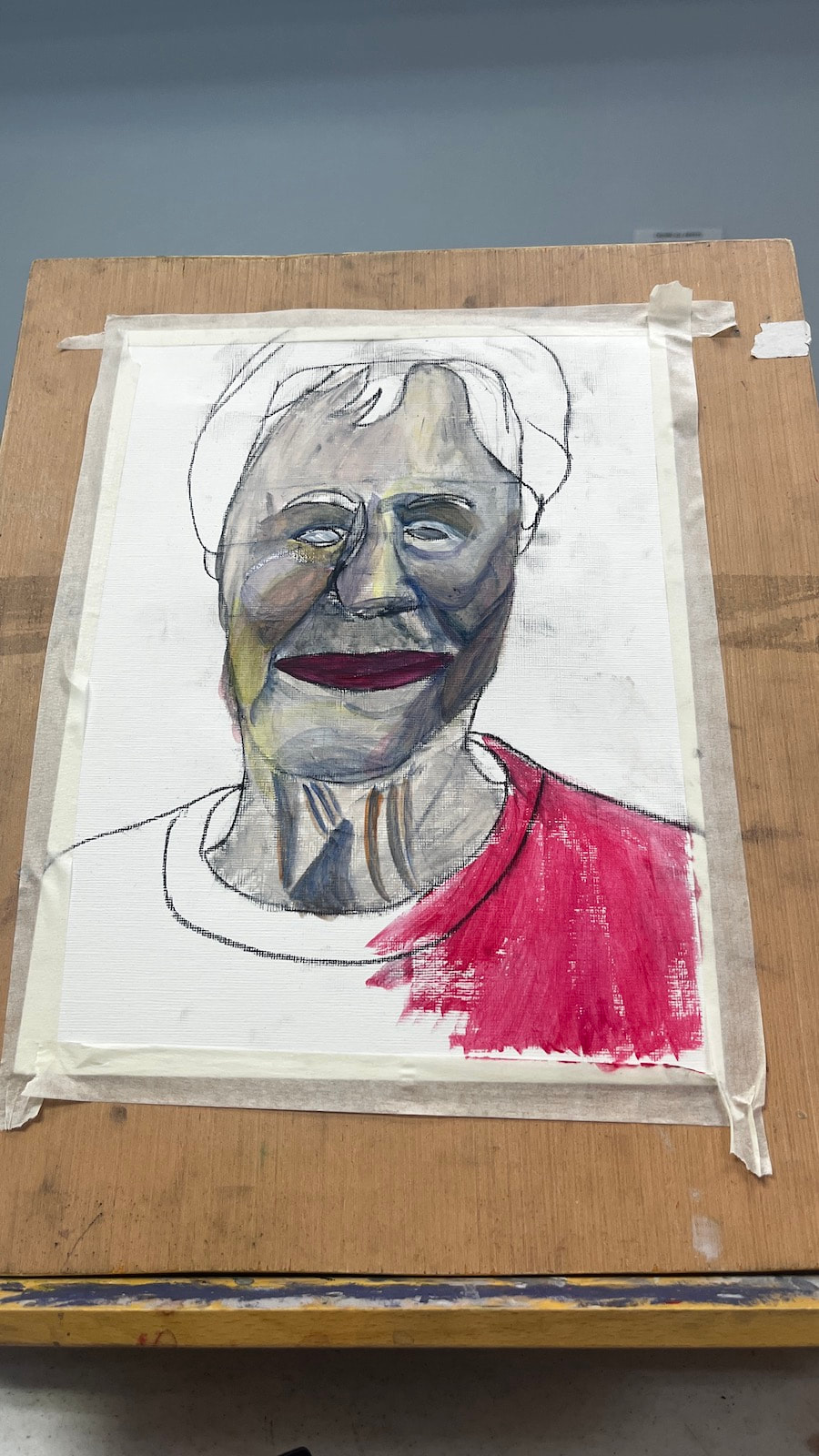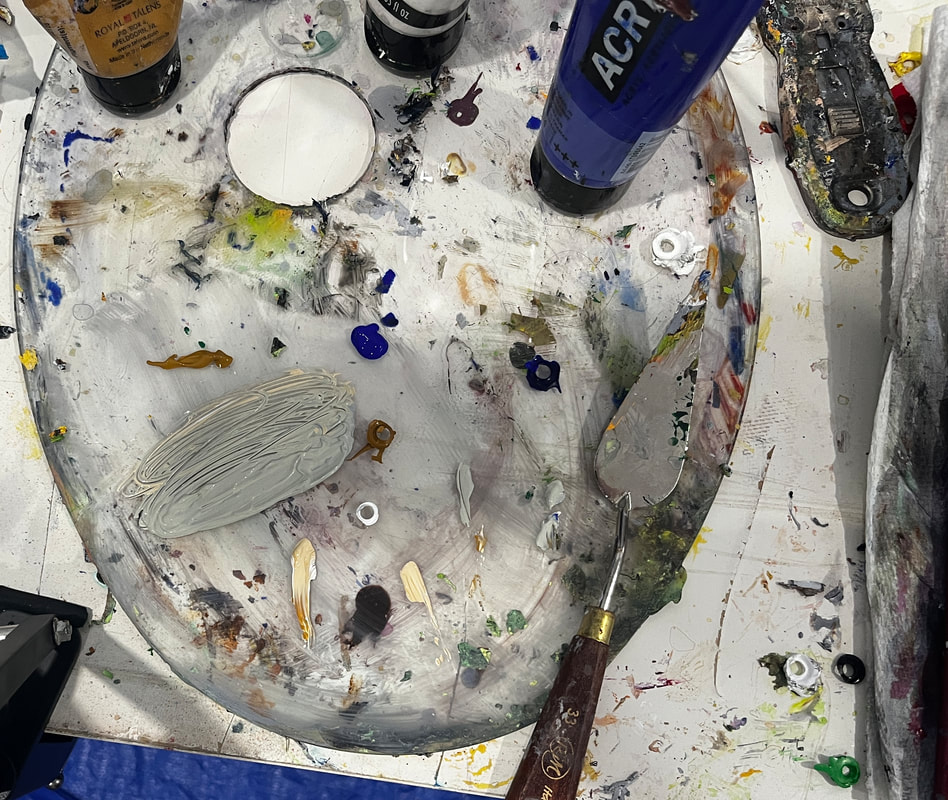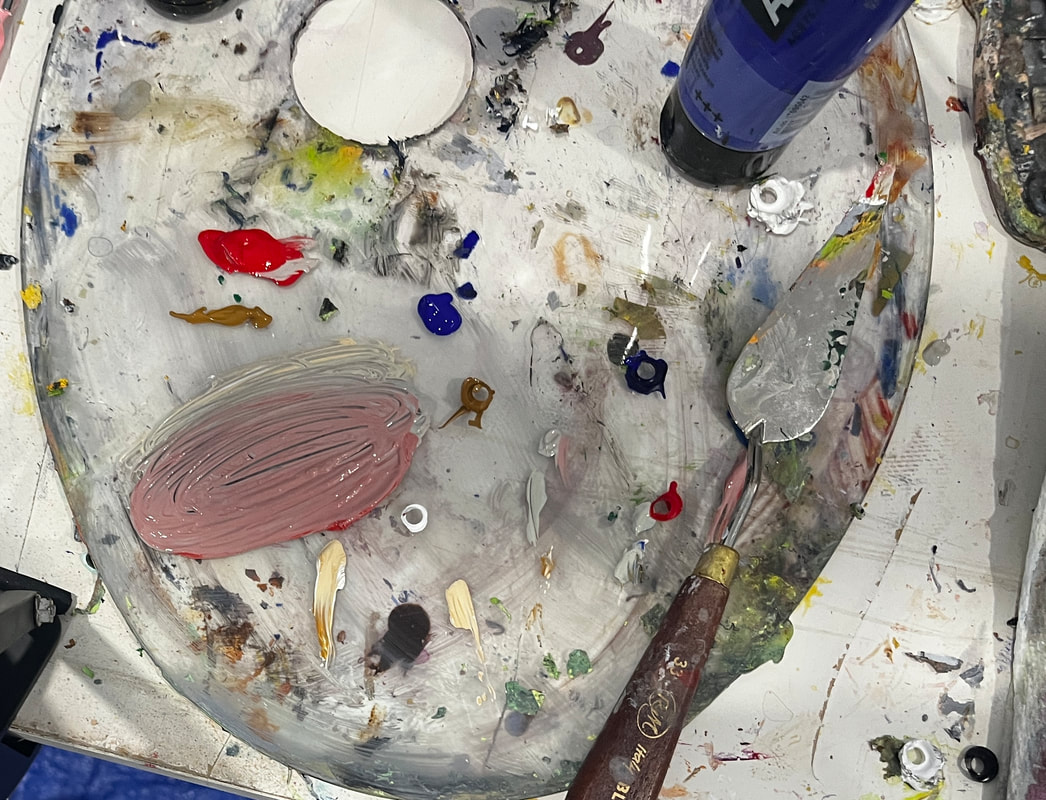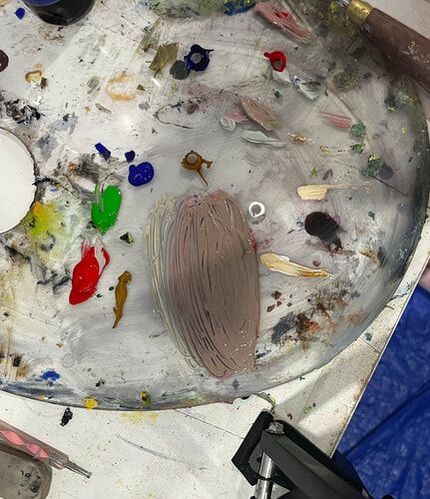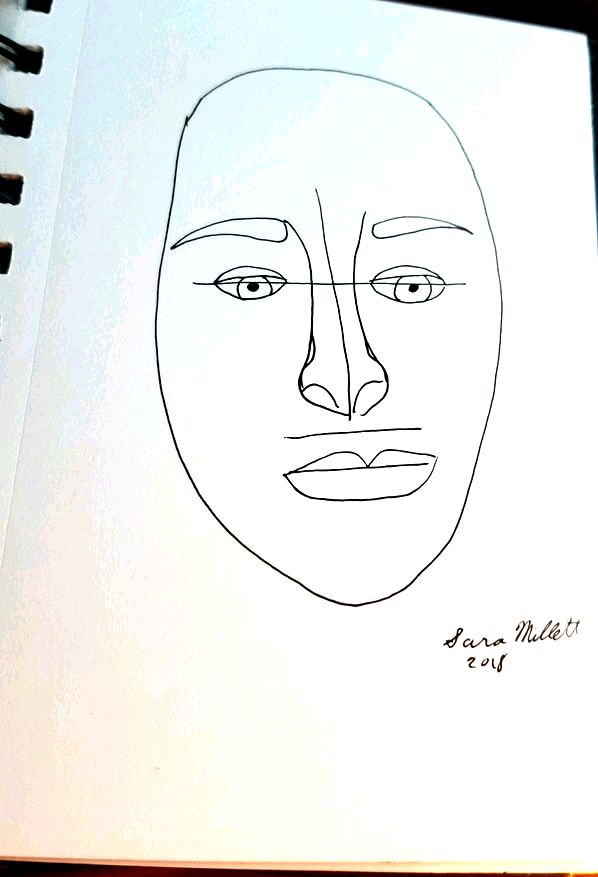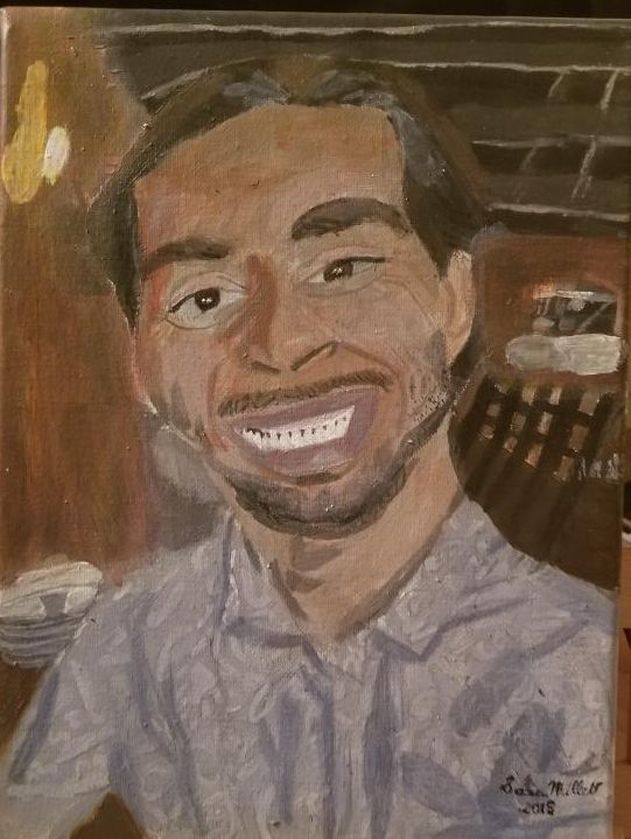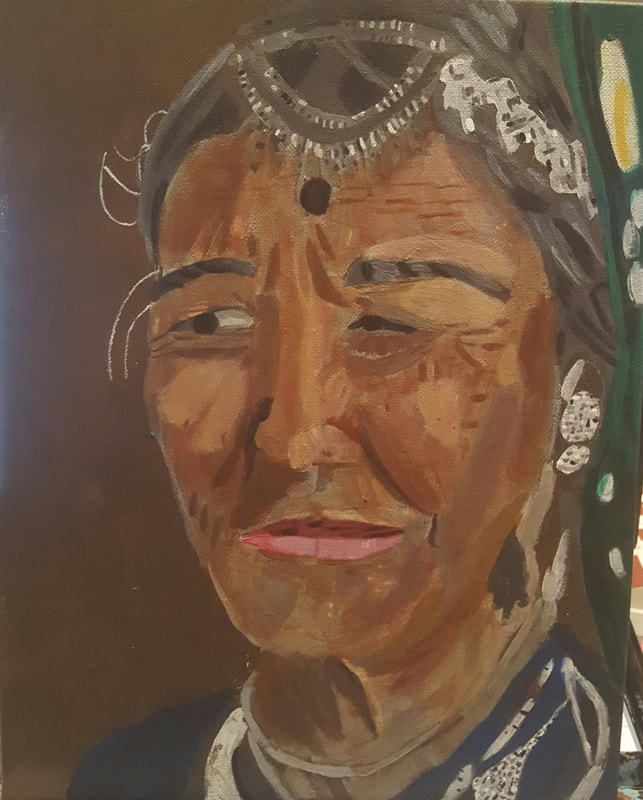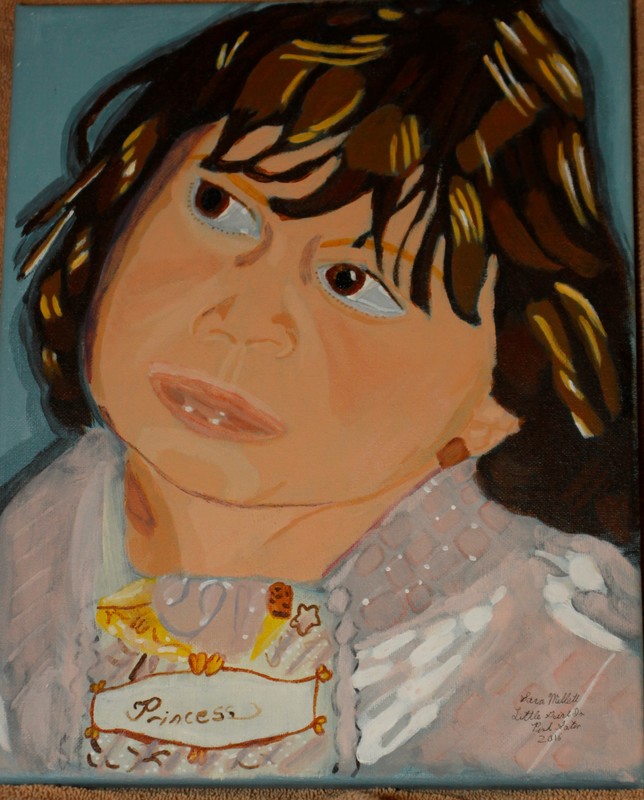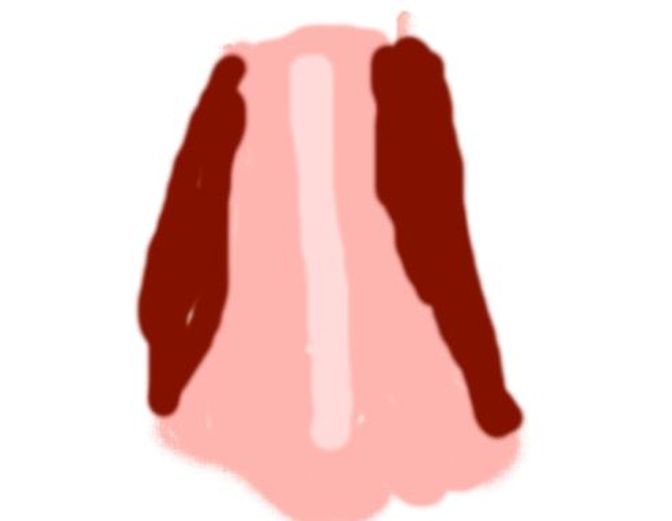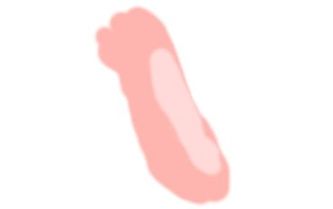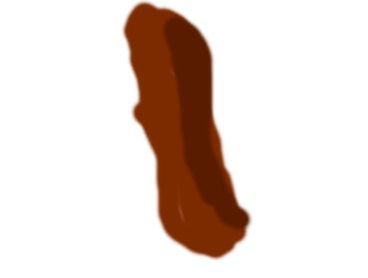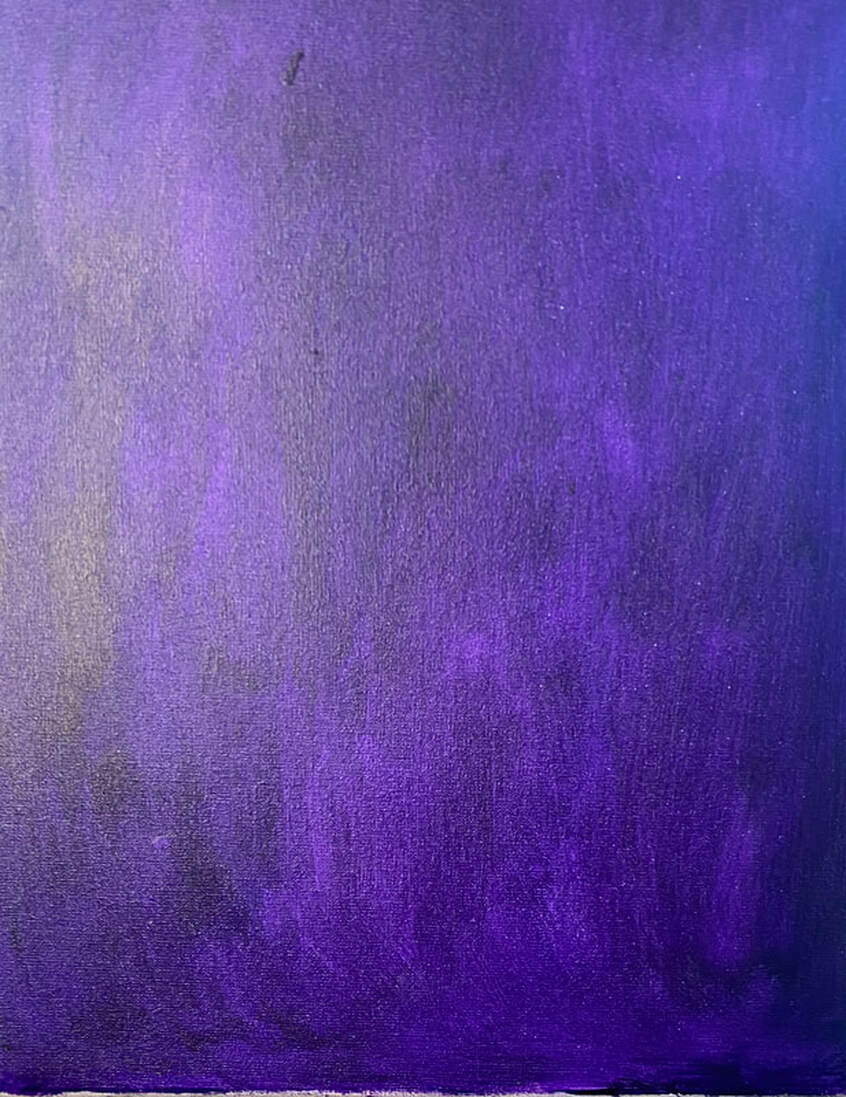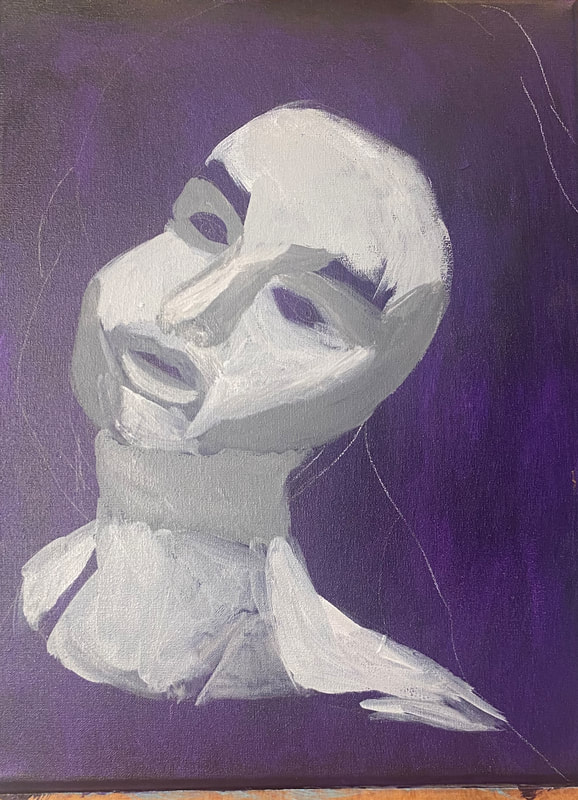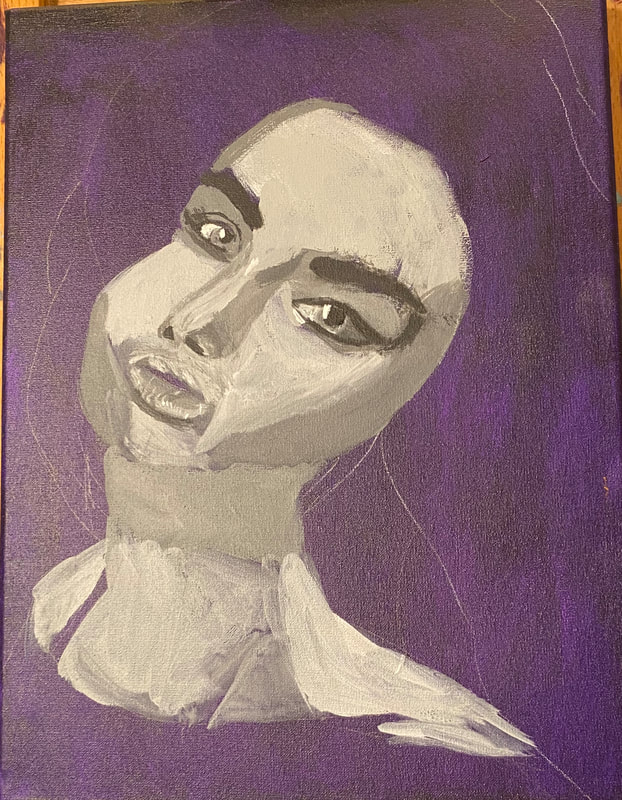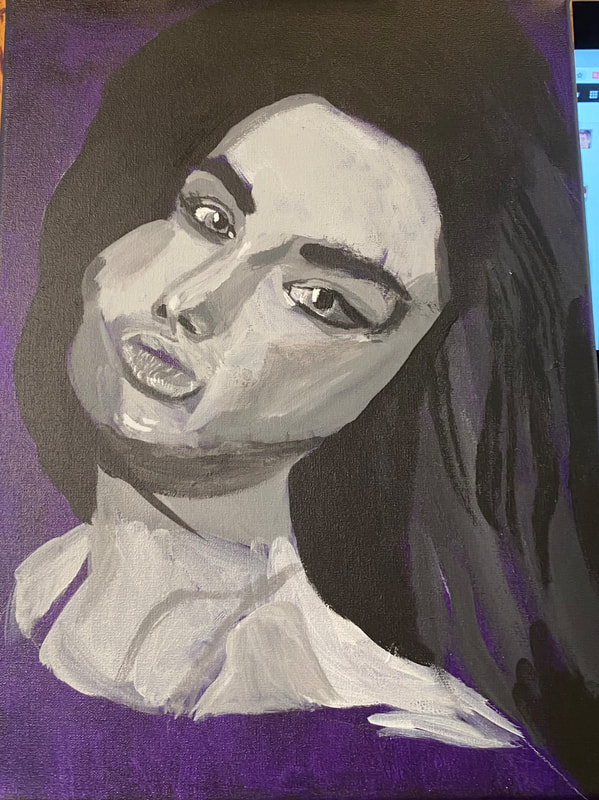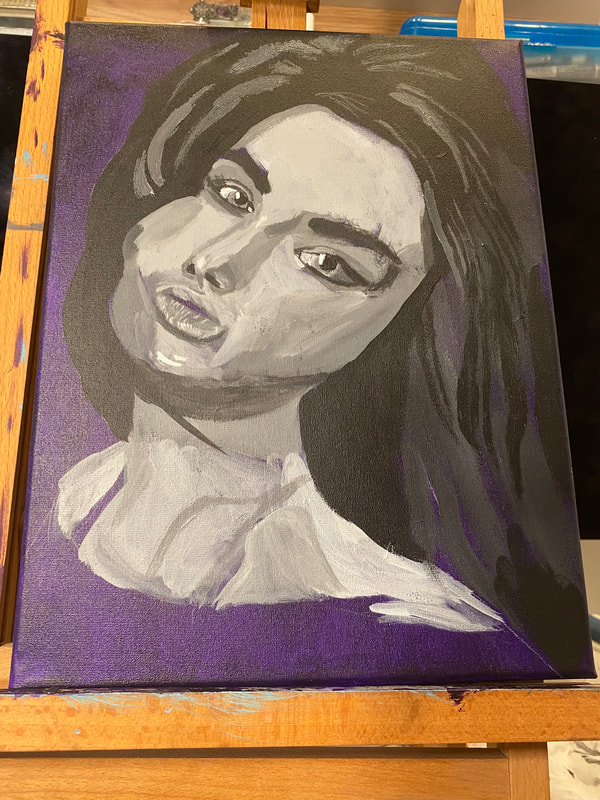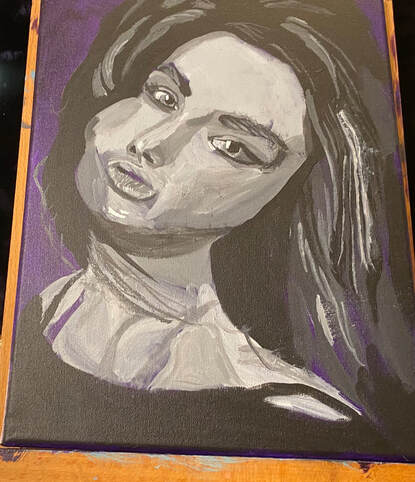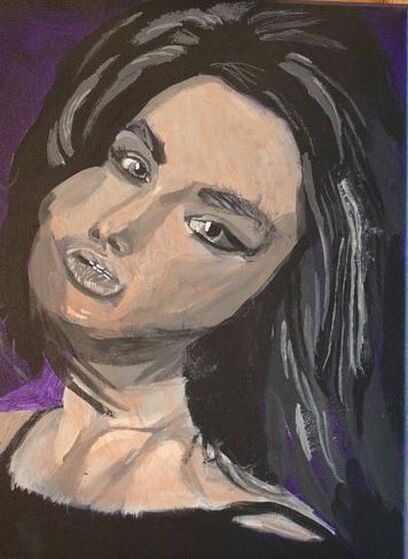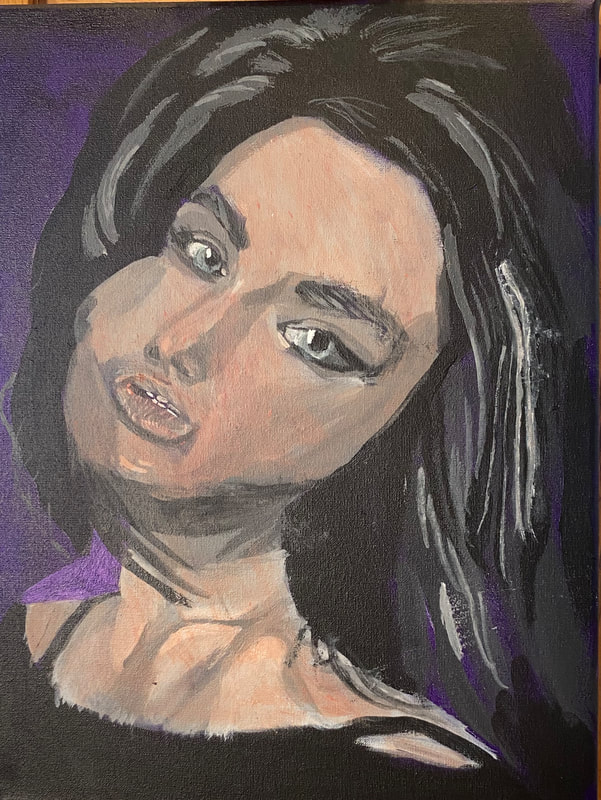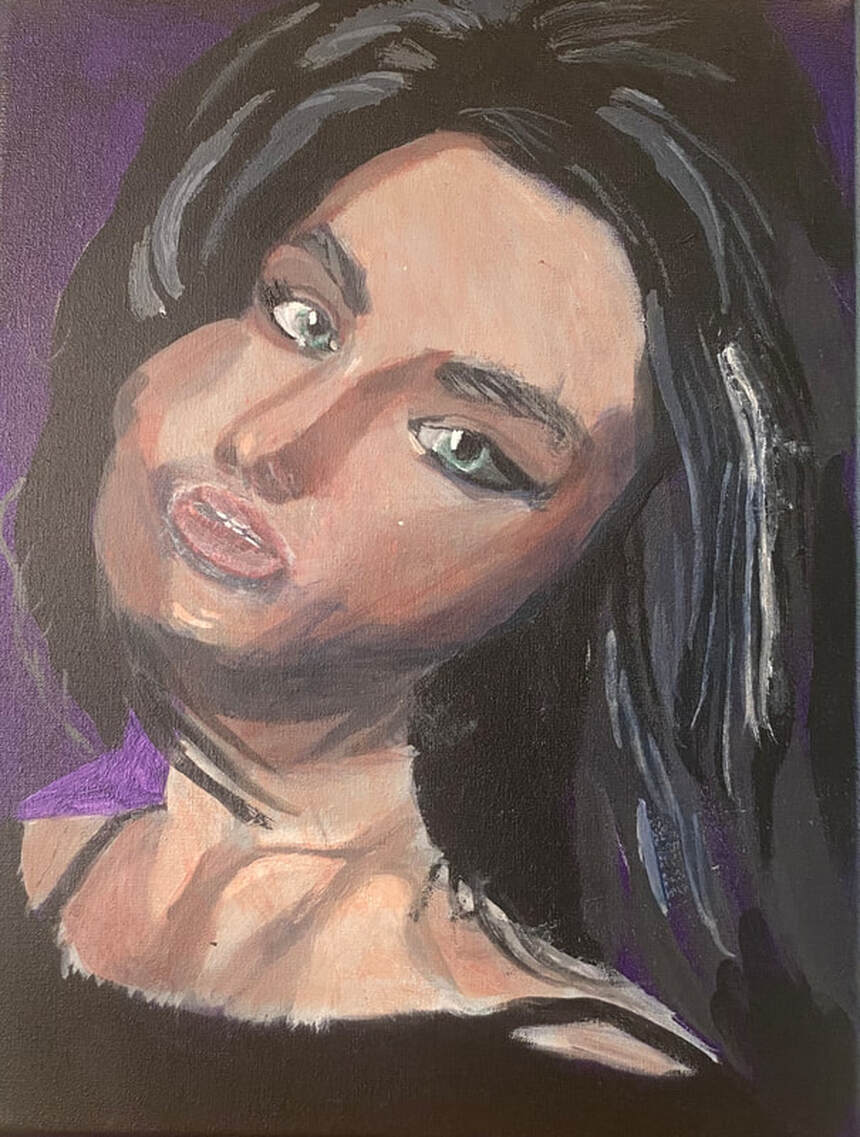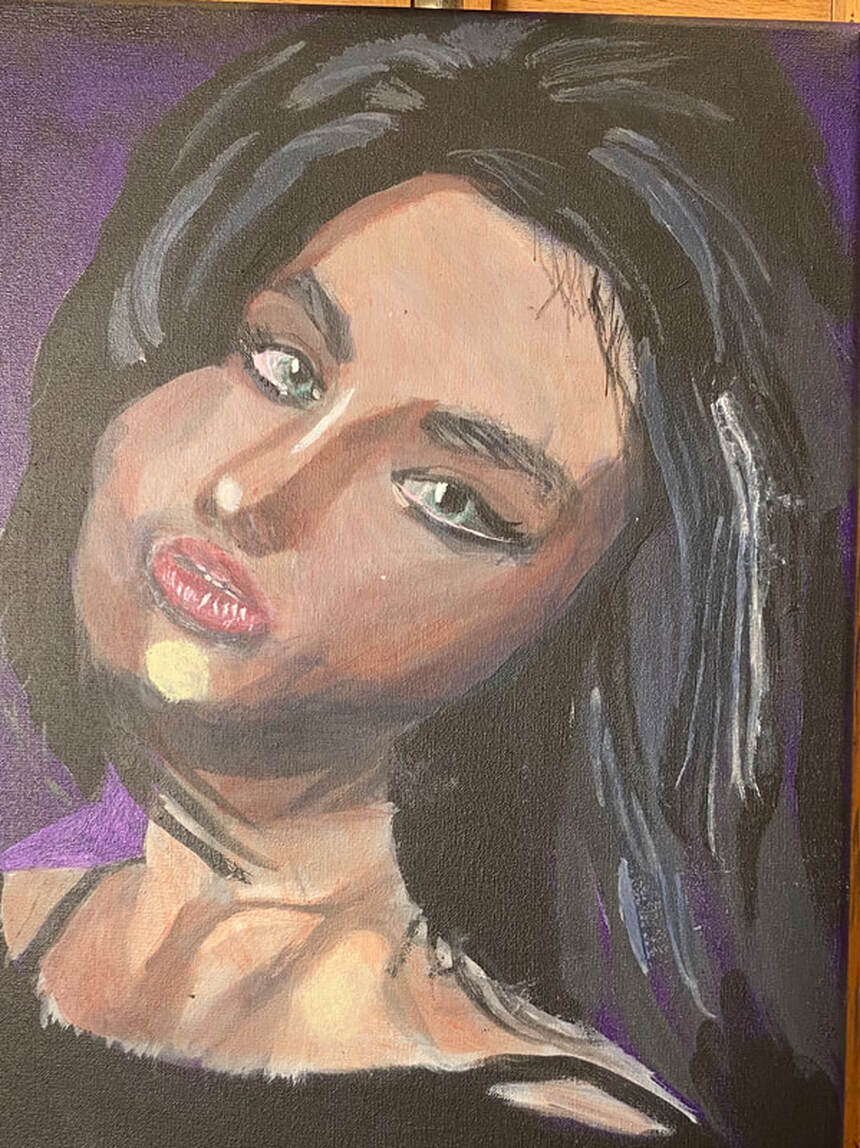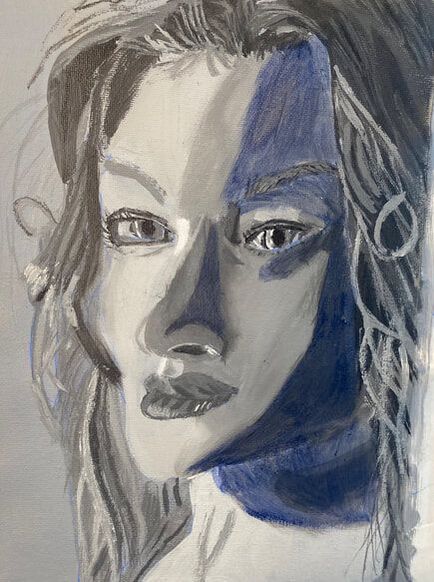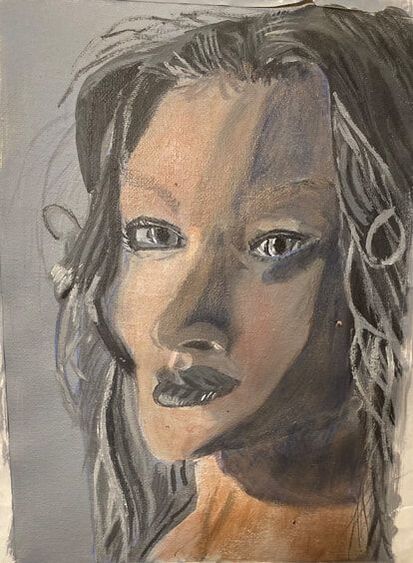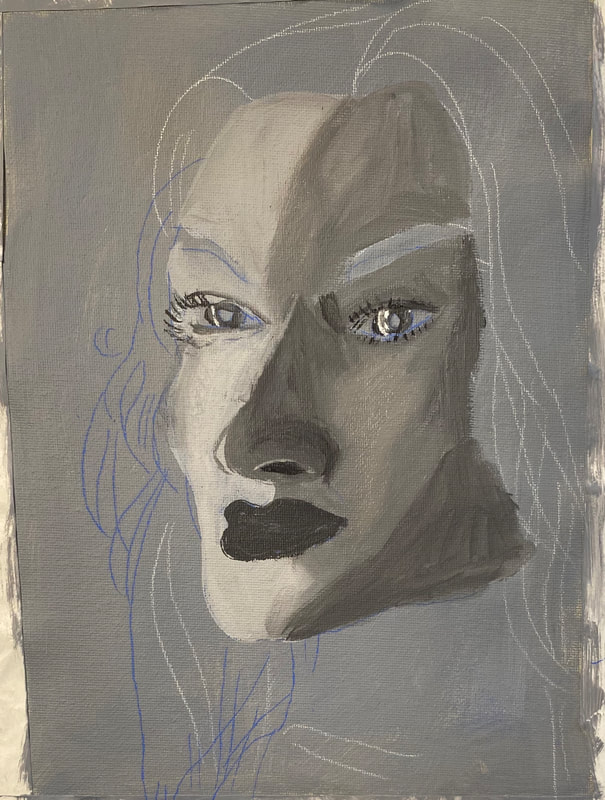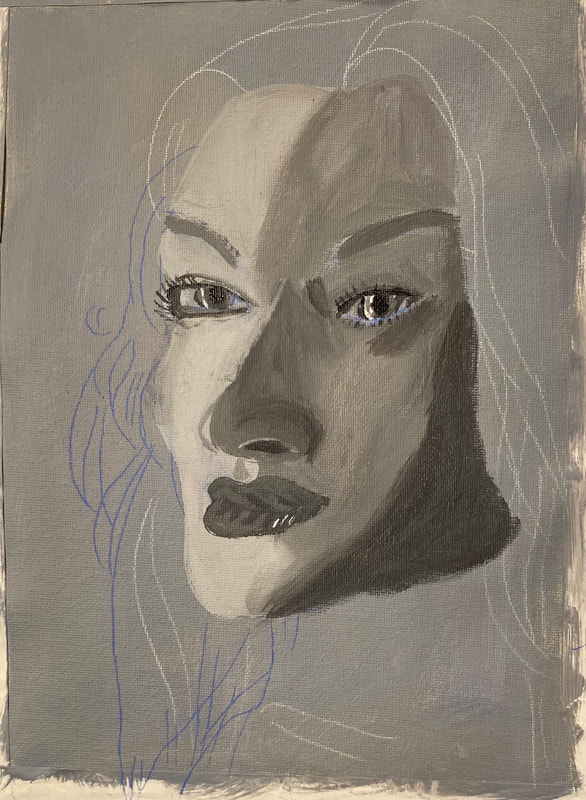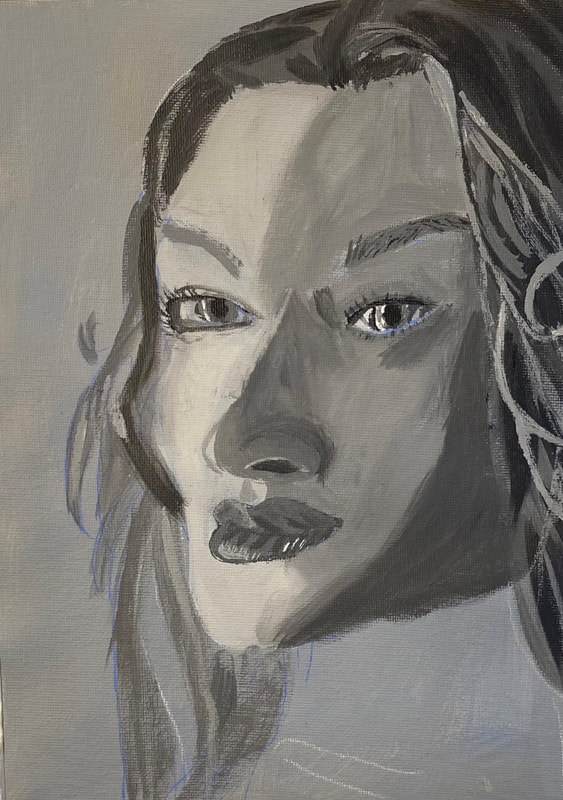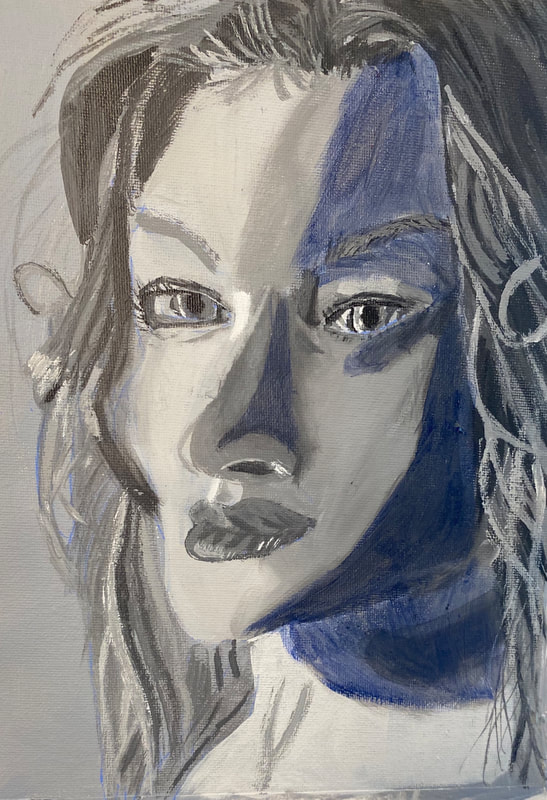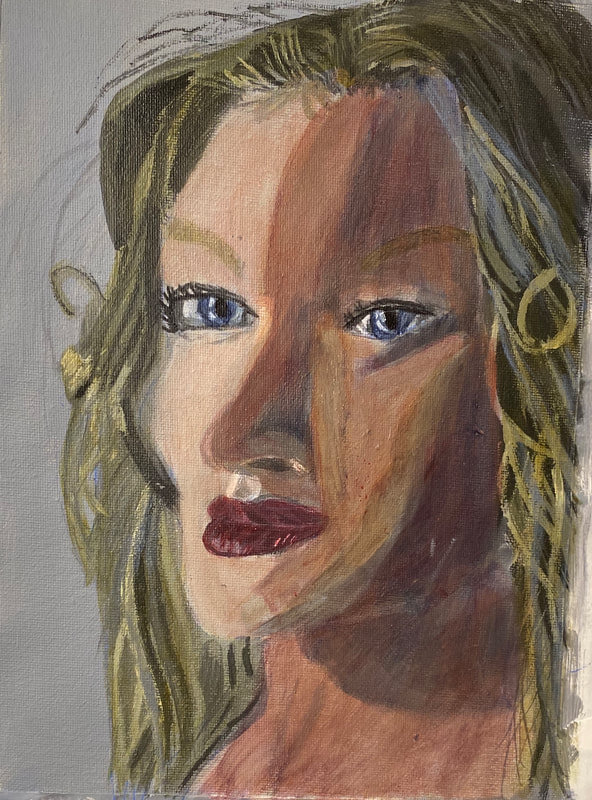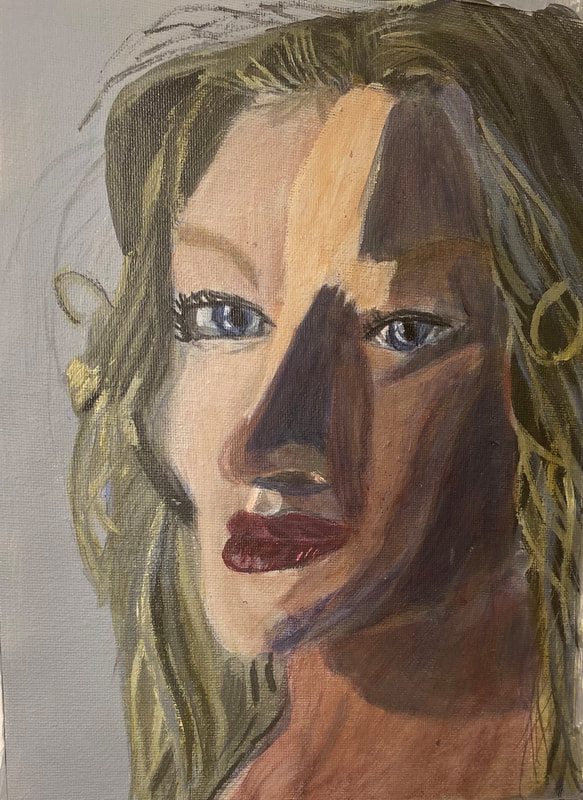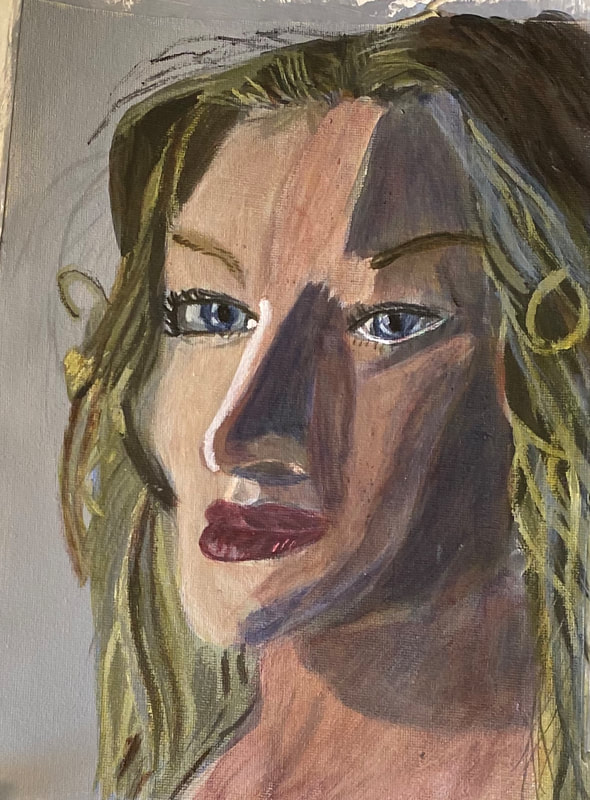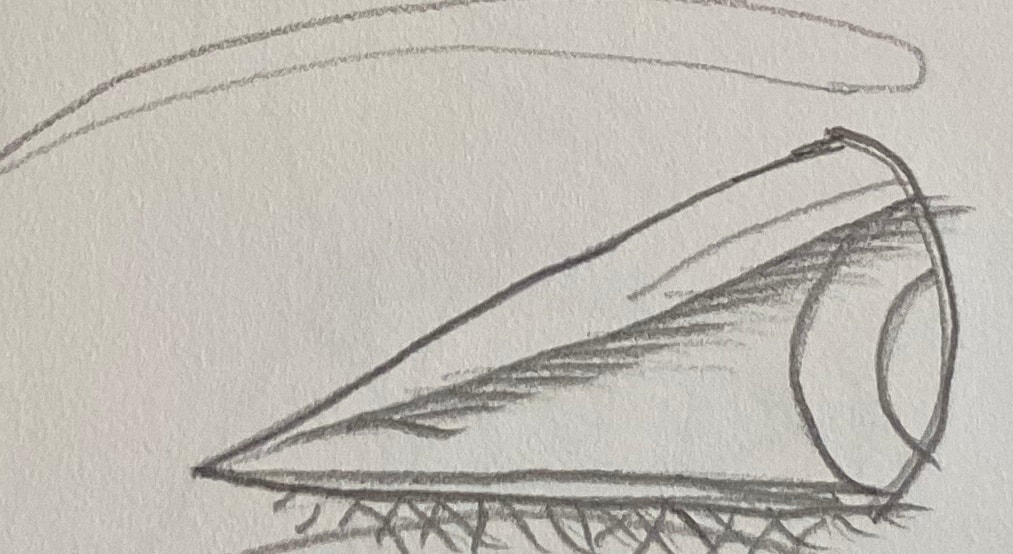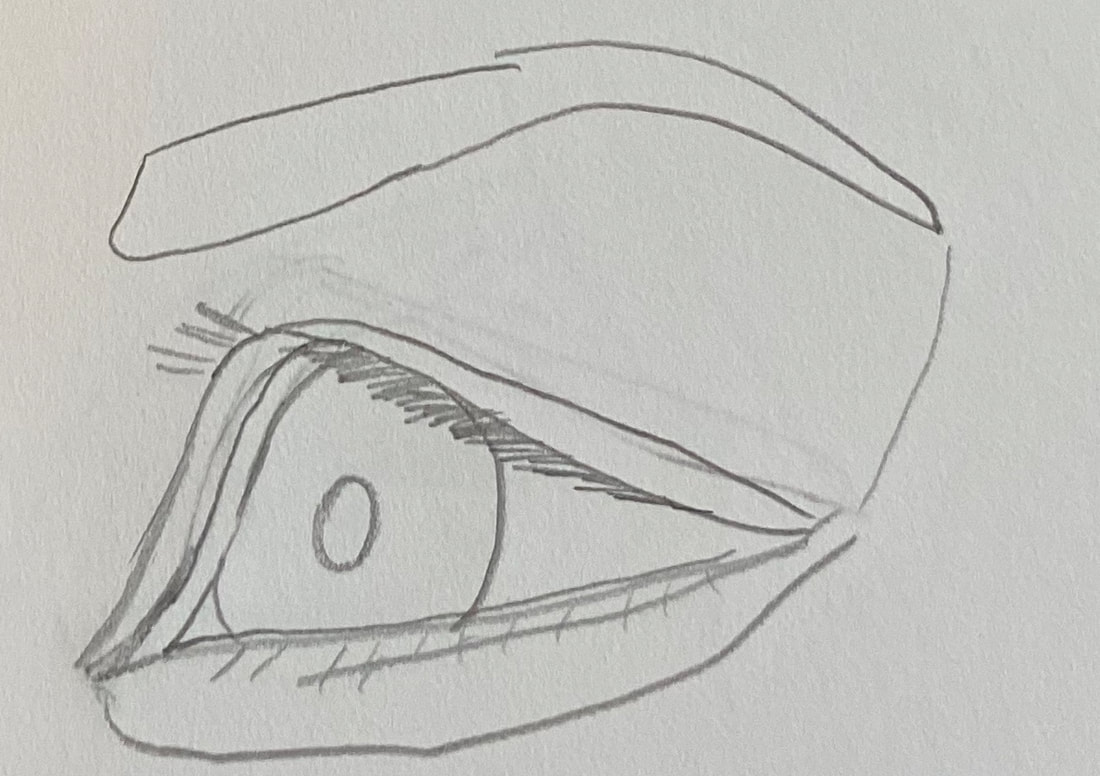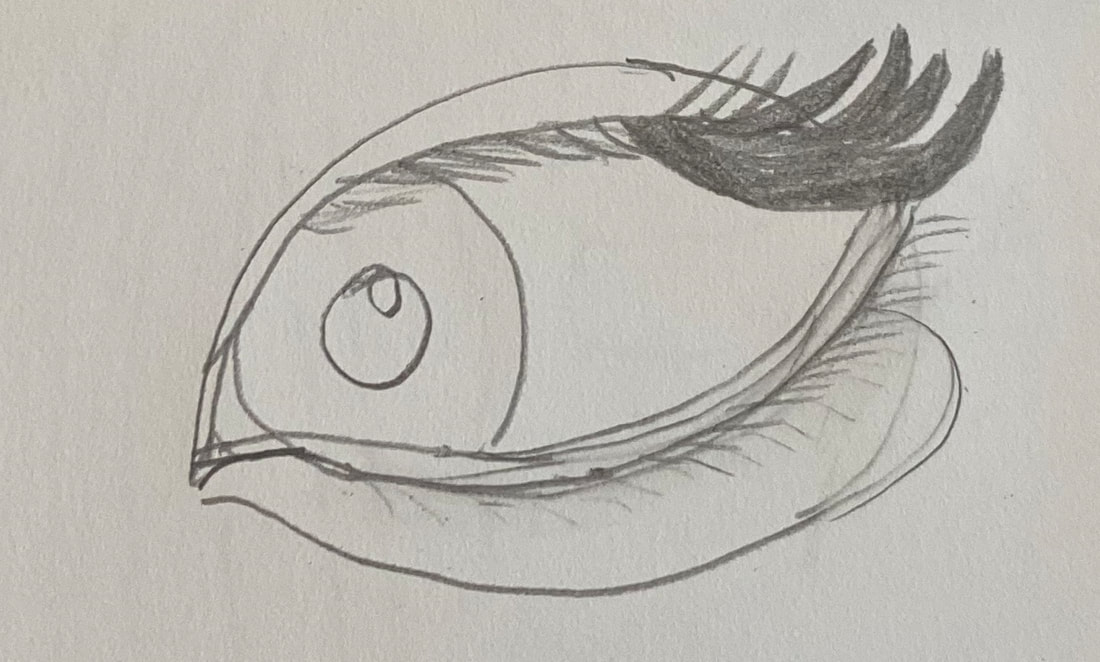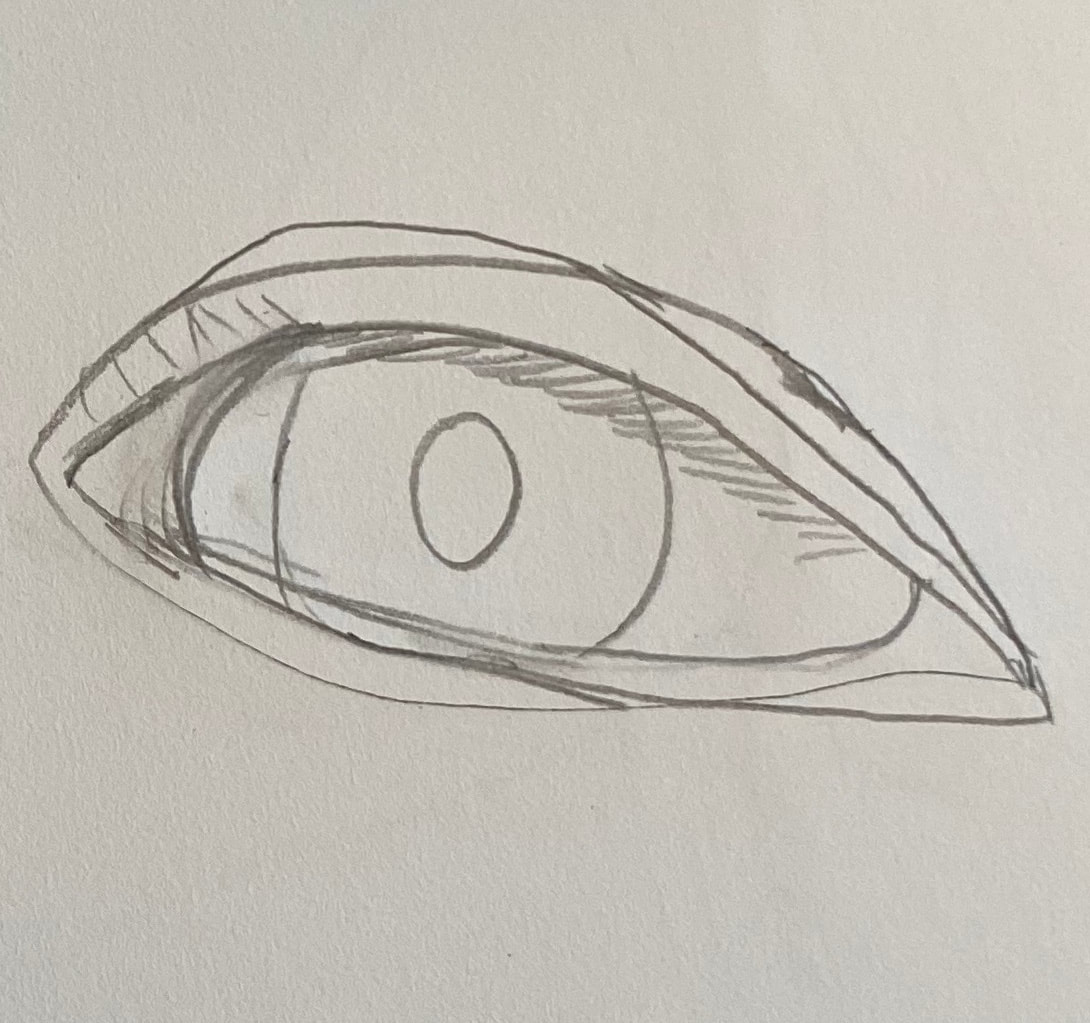|
If you’re like me, you put a lot of pressure on yourself to get your color right when mixing skin tone for a portrait and, if you’re like me, you fail a lot at first. I should note that things like the type of light the person is under will affect how the color of their skin looks, so, technically, there’s no such thing as a perfect or “correct” skin color. Nevertheless, you’ll probably find that something’s look off to you. What now? Do you just throw the whole painting out and start over? Of course not. There’s always something you can do. Most art teachers, and I agree, would probably tell you to add color in slowly a little at a time because, well, you can always add more, but you can’t take the color out once it’s in there, they say. They’re right, you can’t take a color out once it’s mixed in. But you can neutralize it by mixing it with its complement. Red is an easy color to mix too much of, because it’s so strong and when that happens, I mix green in with it. I do agree with trying not to add too much in the first place, but mistakes do happen despite out best efforts. If you mix too much blue into your skin tone, the effect it can have on it is making it look gray. To counteract this, I mix a bit, just a bit, of red, to liven it back up. What if you don’t notice anything wrong until your paint is on the canvas? Don’t worry. You can still use complementary colors via glazing. If you’re looking at your reference photo or model and just can’t figure out what colors to use, I encourage you to just come up with the best approximation you can. Once you see what you’re working with, it’ll be much easier to know which of the tricks above you need to employ to improve it. You can edit a rough draft, after all, but you can’t edit something that doesn’t exist.
0 Comments
I've made posts about portraits before, but this time, I'd like to make a guide for the absolute beginner to portraits. In an earlier post, I told you about how to apply the golden ratio to drawing a face, but in this post, I'd like to show you a more simplified version of this. Placement Of Features As you can see, all I've done is draw a basic face, then draw a horizontal line at the halfway mark, a vertical line down the middle and another horizontal line at approximately one third the distance from the bottom of my vertical line and the bottom of of my face. I drew my eyes along the top horizontal line, my nose around the vertical line and my mouth along the bottom horizontal line. This keeps everything lined up. I drew my eyebrows right under where the top of the nose was. I just want to note that I used pen because that's what I had available to me and so that the lines would show up. When you do this yourself, you'll use a light pencil so that you can either erase these lines when you don't need them any more or they'll get blended in when you do your shading. You don't always have to use these lines. I don't. I just draw by eye, but they can be helpful for people getting started. It goes without saying, though, if you're going to use these lines, make sure you draw them very lightly. You should be able to erase them easily, or cover them up with your shading. You're also not going to draw the same shapes I drew. You're going to draw whatever shape eyes, nose and mouth that your subject has. Pupil Size I imagine most people probably don't pay a lot of attention to this, but the size of your subject's pupils will send a big message about their mood and demeanor. If you draw your subject's pupil's pinpoint small, like this they'll look angry, disgusted or just shocked. Most of the time we don't want our subjects to look this way, so we want to open up the pupil a bit, more like this. Subjects with pupils like this will look friendly, open, and interested. They will also come across as being generally more attractive. But don't go the other extreme, ie this. If you draw your subject's pupils like this, they'll look like they're on drugs or concussed. Start In Black and White I think the best advice I can give you for when you're getting started on portraits is to start out working in black and white. I'm not saying you need to work in graphite. You can use paint if you'd like, but I think you'll be less stressed if you don't worry about color for a bit. Working in black and white will help you to perfect your shading and your highlighting. This brings me to my next point... Pay Attention To Value Here are some examples of portraits I've done and where I put the shading and highlighting. In these two, I put shading only on the left-hand side of the nose. In this one, I put shading on the top and bottom of the nose, but nothing in between. It's not about a streak of highlight down the middle and blocks of shading on the side, like this, Also, you'll find that most of the time, you'll get the best results if you layer your shading and highlighting. I hope you find these tips useful. If you use them and want to share your work with me, please post it to social media and tag me. I'm Sara Makes Art on Youtube, Facebook, and MeWe and @_saramakesart on Instagram.
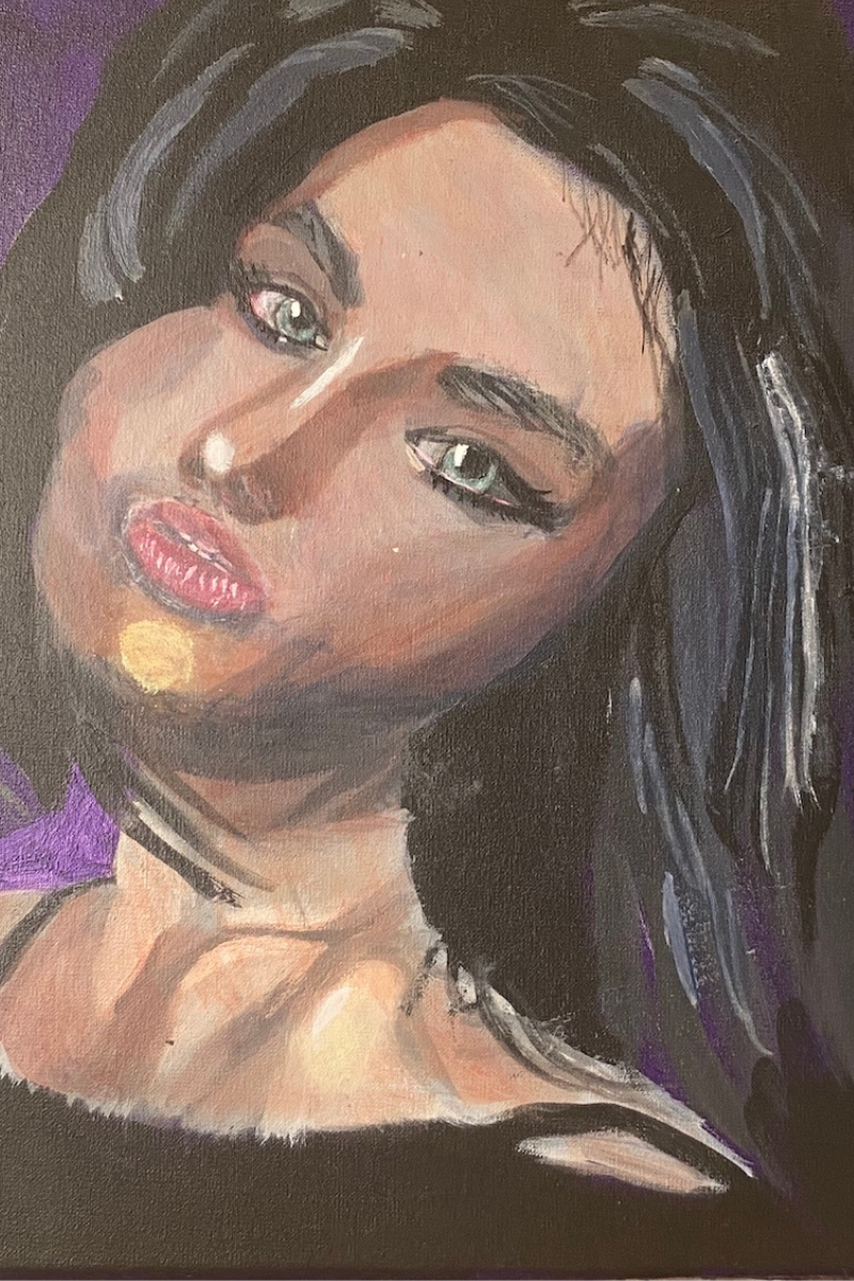 The more I used this canvas the more I liked it. More about that later. The edges are thinner than most I’ve worked with. I believed that was the only con of it, but after having worked on it for more than a week now, even that doesn't feel like much of a con. I decided on a bluish purple background for this portrait. I decided to mix ultramarine into my dioxazine purple and see how I liked that. I didn't mix any white into it, though, because I wanted it to be extra dark and, more importantly, I didn't want to dull the color. I painted my background in two layers using a large filbert brush and blending out my strokes with a mop brush. As I was putting the final layers on my background, I really started to notice how pleasant the texture of this canvas is. Fast forward, and now I’m building up depth in her eyes and mouth with shadows and highlights. Using a liner brush, I painted highlights on her eyelids, being careful to avoid the creases I’d painted. Where you place these shadows and highlights is just as important, if not more so, than how dark or light they are in terms of the structure of the face. Painting something a shade or two darker than it is in the reference photo won’t throw off the structure of your face as much as putting that same mark a centimeter or two of from where it should be. I’ve been making a point to keep my hand moving continuously while making most of my strokes, rather than stopping and starting. This creates a much smoother appearance. Making those smooth lines is also very easy on this canvas. I’m especially proud of the way her eyes have come out. I made her cheek rounder by painting another stroke on the outside. On the topic of her eyes, I ended up enlarging both of her pupils to open her eyes more. Pupil size can really effect the overall expression of the subject. Advertisers know this Last night it was time to add the lightest shades to her hair. I knew I wanted a lot of contrast between these and the darkest shades, but I went a little overboard with how light I made it to begin with, so I needed to add more black to my mixture. As with every other part of the hair, I was careful to place these strands in the right places in relation to each other. That went a long way in giving the hair the texture I wanted it to have, and the volume. I worked on painting her chest too, particular around her neck and shoulder, which I see both need to have brighter highlights than they have now. Her chest is the main thing now keeping me from moving on to the color. I haven’t gotten it to the point where I feel that the definition in her shoulder and collarbone is defined to my satisfaction. I’ve been working on making the highlights brighter that need to be and I think now I need some highlights that are just a touch brighter over very small areas, such as above and below her collarbone. I’m going to keep layering. I’ve filled in her teeth using my liner brush. For the first layers of color on her face, I knew I wanted a pale muted pinky color. I tried mixing cadmium red deep, because it has more blue than cadmium red medium, which is more orange, with deep green permanent. This color came out too purple, though, so I mixed some yellow in to take care of that. I thinned this mixture down with water applied it in two thin layers all over the subject’s face and neck. I’ll add more layers to the skin later, but the next thing I did was paint the irises. I did this by mixing a touch of the deep green permanent into some gray that I made by mixing zinc white and ivory black. Even though the subject has green eyes, I didn’t want to use straight green. That would’ve looked cartoonish. I mixed a darker version of the same color I used for the base color of her skin for the shadows under her cheekbones, the sides of her forehead and around her nose. Before I did that, though, I glazed some zinc white over the middle of her forehead, down the bridge of her nose, and on the apples of her cheeks. This small change gave her face a lot more definition. While I was painting what I thought would be the darkest shadows on her face, still using my brownish pink mixture, I realized I would need to include some blue shadows. I mixed those from ultramarine blue and an orange made with magenta and glazed them over the shadows I’d just painted. I feel I should point out that I was able to blend out the edges of these shadows very easily on this canvas. Painting pale gray on the outer corner of her right eye seemed to open it up more. I also painted a mars black line underneath and gave her some lashes. When I go to work on the piece again, I will glaze some bluish gray over the cornea of her right eye, too. I felt that her lips needed to be lighter, so I started by glazing some zinc white over them. I tried twice, thinking it was too light both times. The white was completely covering my color and all my details, which was not what I wanted. I decided to just start by glazing a streak of white in the center. I’ll probably go back and glaze some pink over that to help it blend in more with the rest of her mouth. Today’s painting session started with that glazing of pale pink over the white of the mouth I predicted. I decided I was going to add some small areas of titanium white with my liner brush for extra glossiness, but that would have to wait. In the meantime, I directed my attention to her eyes and started by applying the streak of dark blue gray under her right eye that I’d known needed to be there since yesterday. I added some pale yellow to her left shoulder and her chin to show them catching the light more. When I started my latest painting session, I sat down with the intention of painting the shadow the rim on the outer corner of her right eye, then moving on to her mouth. While I was putting my paint onto the palette, though, I thought it would make more sense to start with the mouth, since I would need a lighter color for that, so that’s what I did. I glazed a pale pink over the white marks on I’d painted on her mouth, blending them in much more with the rest of it. This greatly improved the look of her lower lip in my eyes. Then I mixed more red and more green into my color and did what needed to be done on her eye. I’d known for a while that I’d need to paint some titanium white on her left shoulder, just a small spot, to show where the light was reflecting. I took care of that with a liner brush. It was at this point that I started struggling to find things to do on the painting, but I saw that her eyes needed a dark gray rim, very thin, around the edge of each iris. I really struggled to get these lines thin enough. I mixed my gray from ivory black and zinc white, by the way, the transparent versions of black and white. Anyway, I put just a touch of paint on the tip of my liner brush and was careful to let just that touch my canvas. Even so, my lines were still too thick. I had to wash most of the outer edges of them with water. I noticed in my reference photo that there was a similar line going all the way across her lower lash line on her right eye. This also came out thicker than the reference photo, but this time I didn’t mind. Today I glazed more of my flesh color over the spot on her chin, which I felt was standing out to much, drawing too much attention to that area. I directed my attention, now, to her chest and saw that there was some pinkish color reflected around her collar bone. I also added wisps around her hair with my liner brush. I had a very short painting session. I started by painting a bit of gray on her strap for a highlight. I’ll add more to that later, but I needed it to dry, so I moved on to another section of the piece. I noticed that the highlights on the right side of her hair needed to come down farther on her face, so, using my round brush and the gray that was still on my palette, I did just that.
I couldn’t find any information online about how using a blue underpainting for a portrait was done, but I’m basing this off of what I saw Leo Stevens do while recreating Raphael’s “La Fornarina”. Leo used a green underpainting, and while I’m using blue, I copied his method of only putting it on the contours of the face. I did this over a grisaille. In the later stages of painting this, I noticed that some of the darker parts of her skin had taken on a violet tone. I was puzzled as to what could have caused this, but I should have known that would be the result of glazing color with red mixed into it over something that was blue. Maybe next time, if I want to give someone a rosy glow, I'll add some yellow into the skin, or yellow ochre, if I'm glazing it over blue, to prevent the violetization of the skin. Yes, I just made up a word there. If I was going to try this method again, I would not mix red directly with the flesh color, at least not for the parts I intended to paint over the blue. That’s how I got the violet. In doing this, I accidentally mixed a color by glazing. Mixing color intentionally by glazing can look beautiful, but it's kind of annoying when it happens against your wishes. So, does using a blue underpainting give a more realistic result? I don’t think I can say conclusively yes or no. First off, it may depend on the subject’s skin tone. I have a feeling this technique works better on subject’s with lighter complexions. This was a renaissance technique apparently, and most subjects of paintings back then were Caucasian as was the subject I chose for my piece. In fact, the reason I specifically chose the subject I did is because she reminded me of someone who might have been in a renaissance portrait. The skin of Caucasian people is thinner than those of people of other ethnicity and so the veins tend to show more through the skin, which is where the blueness comes from. Extremely dark skin also tends to have a bluish cast to it, so this technique might also work if your subject has that type of skin tone. Regardless of your subject’s skin tone, I believe glazing, ie, applying color in light layers, in this of the flesh tone over the blue, is the key to making this work. Surprise, surprise, glazing was also a major technique of the Old Masters. So that is my experience doing a portrait with a blue underpainting. Here are some pics of the process.
Drawing eyes in profile and three quarter view is different from drawing them head on. At these angles, certain things like the waterlines, and the setting of the eye in the socket will be emphasized. The eyes may even appear to be different shapes. In summary, start with a sideways "V", pay attention to how the waterline curves and follow it, keeping in mind that it may be more visible at certain angles. In quarter view, the setting of the eye in the socket is more visible, and the eye is usually more curved on top and flatter on the bottom.
A while ago I took a class in portrait drawing in which I picked up some tips that I think make drawing accurately proportioned faces fast and easy. They involve drawing basic shapes and then refining them and using lines to show where particular features will go. In the video below, I walk you through the process of drawing both a face looking straight on and one with a tilt, so you can see that even a slanted head doesn't have to be intimidating to draw. |
Sara MillettPainter of portraits and wildlife Archives
November 2023
Categories
All
|
